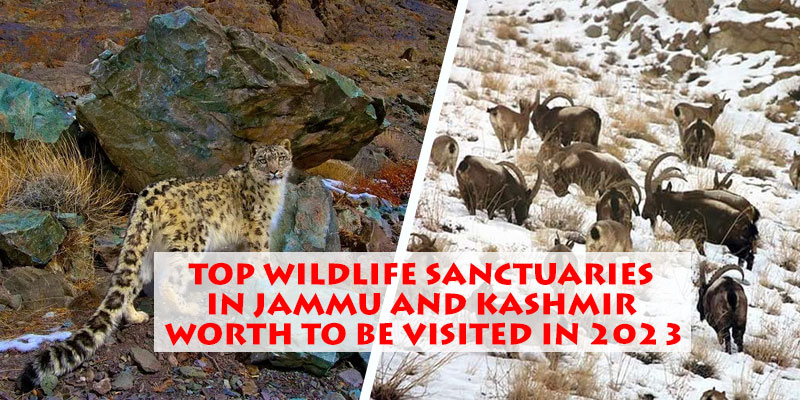Nestled in the northernmost region of India, Jammu and Kashmir is a land of breathtaking beauty, renowned for its snow-capped mountains, pristine lakes, and lush valleys. Beyond its picturesque landscapes, the region also boasts a rich and diverse wildlife that thrives in its numerous wildlife sanctuaries. Some of the prominent animals found in wildlife sanctuaries in Jammu and Kashmir include Kashmir Musk Deer, Hangul, Markhor, Tibetan Wild Dog, Chiru, Himalayan Tahr, Tibetan Gazelle, etc. and thus a lot of people visit these sanctuaries to see these animals living in their natural habitat.
In this blog, we will embark on a virtual journey to explore some of the most captivating wildlife sanctuaries in Jammu Kashmir, delving into their unique ecosystems and the remarkable species that call them home.
List of Top 7 Wildlife Sanctuaries in Jammu and Kashmir
1. Gulmarg Wildlife Sanctuary
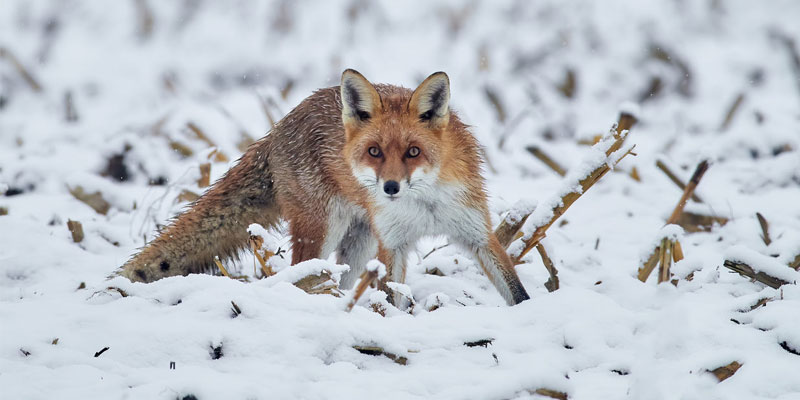
Gulmarg wildlife sanctuary is one of the favorite Wildlife Sanctuaries of Jammu and Kashmir. It is located at a distance of 50km from Srinagar, the summer capital of Jammu and Kashmir. This sanctuary offers a diverse landscape with dense forests, meadows, and high-altitude mountains. These majestic creatures found here are nowhere else on Earth. This beautiful wildlife sanctuary consists of a different variety of fauna and one can get a close range of many creatures here. Among various animals, one of the important animals is Musk Deer. Other animals spotted here are brown bears, black bears, red fox and leopard amongst others.
- Ideal for: Family & friends
- Ideal trip duration: 4-5 hours
- Location: Baramulla, Jammu & Kashmir
- Best time to visit: March – June
- How to reach: by road transport from Baramulla, Kashmir.
2. Hirpora Wildlife Sanctuary
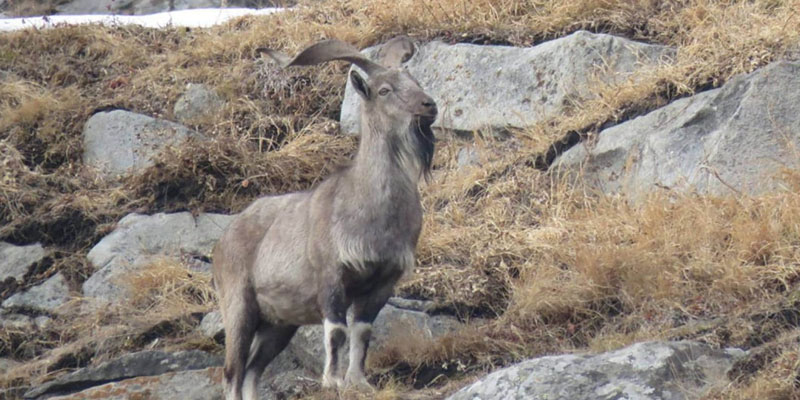
Hirpora Wildlife Sanctuary is located in the Shopian district of Kashmir almost 70 km south of Srinagar. The Hirpora Wildlife Sanctuary is home to several animals and birds and a few of the main animals found here include the musk deer, leopard, Tibetan wolf, etc. also the area is renowned for its mesmerizing landscapes, high-altitude terrain, and diverse wildlife. Trekking through the rugged terrains of this national park offers an opportunity to witness the magic of the Himalayan wilderness.
- Ideal for: Family and solo travelers
- Ideal trip duration: 2-3 hours
- Location: Shopian district of Kashmir.
- Best time to visit: October – March
- How to reach: Via road transport from Shopian.
3. Hokersar Wildlife Sanctuary
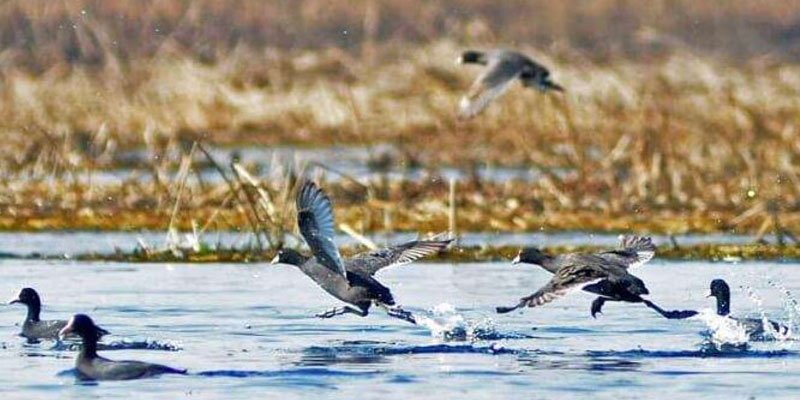
Hokersar wildlife sanctuary located in Kashmir is popular for being the breeding place for many birds. The travelers can visit this place to enjoy the natural beauty of the places along with the natural vegetation of the place. The sanctuary is also a wetland and migratory birds from various places come here. For instance, birds such as white-eyed pochard come from Siberia, China, central Asia, etc.
- Ideal for: friends & couples
- Ideal trip duration: 4-5 hours
- Location: Gund Hassi Bhat, Kashmir
- Best time to visit: October – January
- How to reach: By road transport
4. Kishtwar High Altitude National Park
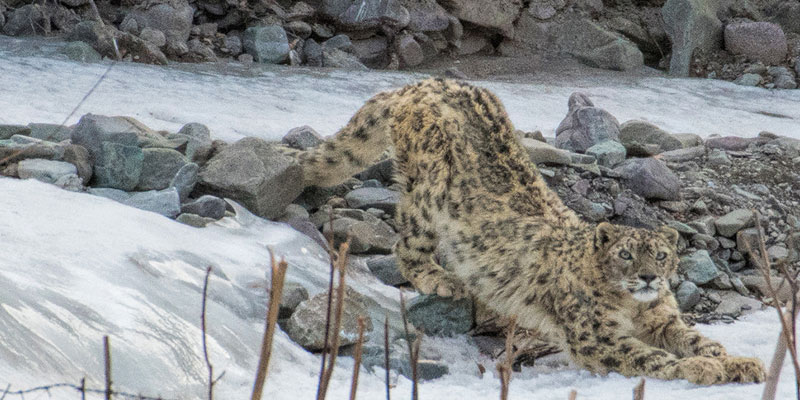
TheKishtwar High Altitude National Park is a haven for nature lovers. This sanctuary is characterized by steep slopes, deep gorges, and dense forests, making it a challenging but rewarding destination for trekkers. The park is home to the elusive and endangered markhor, a wild goat species with twisted horns. Besides the markhor, you can also spot the Himalayan tahr, snow leopard, and numerous bird species. The pristine Chenab River flows through this national park, adding to its scenic charm.
- Ideal for: friends and couples
- Ideal trip duration: 3-4 hours
- Location: Kishtwar, Jammu and Kashmir
- Best time to visit: May – September
- How to reach: By road transport
5. Surinsar-Mansar Wildlife Sanctuary
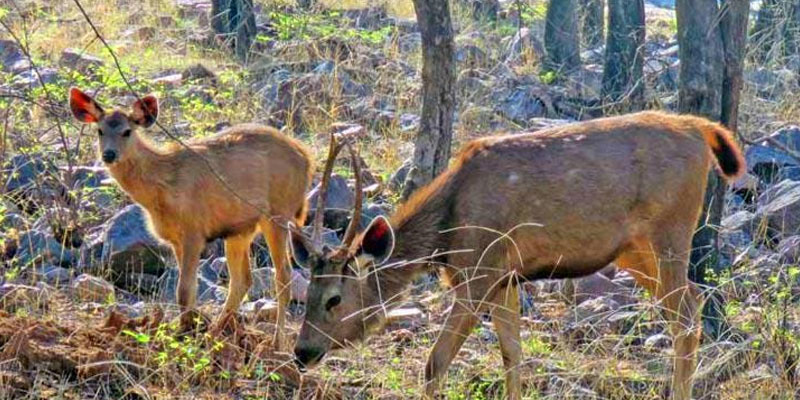
Heading towards the winter capital, Jammu, lies the Surinsar-Mansar Wildlife Sanctuary, a place of serenity and natural beauty. Surinsar and Mansar are two enchanting lakes surrounded by lush green forests and rolling hills. The sanctuary is not only a wildlife haven but also a place of cultural significance.
The lakes of Surinsar and Mansar are home to a variety of aquatic life, including fish and turtles. The surrounding forests host a range of animals, including the Indian muntjac, wild boar, and several avian species. This sanctuary provides an excellent opportunity for birdwatching and picnicking amidst nature’s splendor.
- Ideal for: Family and friends
- Ideal trip duration: 2-3 hours
- Location: Jammu and Kashmir, India
- Best time to visit: September – March
- How to reach: By road transport from Jammu
6. Overa-Aru Wildlife Sanctuary
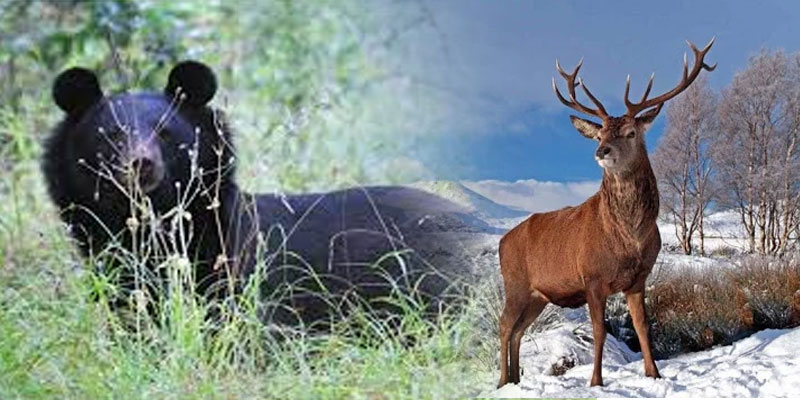
Our final destination takes us to the Overa-Aru Wildlife Sanctuary, located near Pahalgam, one of the most popular tourist destinations in Jammu and Kashmir. This sanctuary is characterized by its lush meadows, dense coniferous forests, and pristine rivers.
Overa-Aru is known for its diverse avian population, making it a birdwatcher’s paradise. You can spot species like the Western Tragopan, Monal Pheasant, and many more. The sanctuary is also home to mammals like the Hangul deer and the Himalayan black bear. Its breathtaking landscapes offer ample opportunities for trekking and photography.
- Ideal for: Family and friends
- Ideal trip duration: 2-4 hours
- Location: Forest Block, Jammu & Kashmir
- Best time to visit: May – August
- How to reach: By road transport
7. Nandini Wildlife Sanctuary
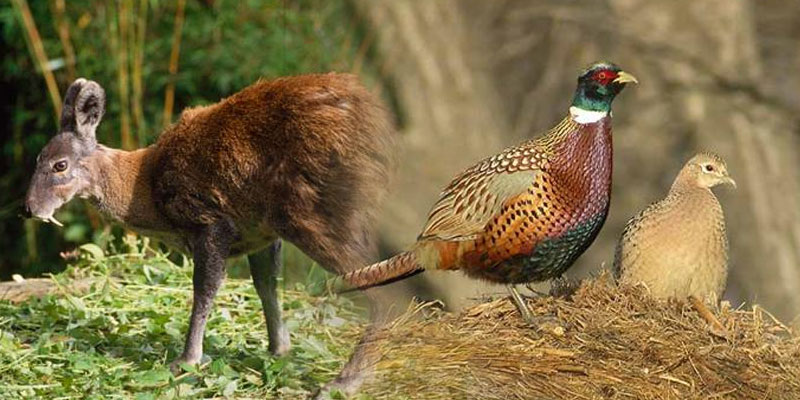
Located in the Kupwara district, the Nandini Wildlife Sanctuary is a hidden gem that offers a glimpse into the natural beauty of the region. This sanctuary is home to a diverse range of flora and fauna. While exploring Nandini, you can encounter species like the musk deer, leopards, and a variety of birdlife. The lush green forests and hilly terrain make this place a popular destination among the ones looking for a tranquil retreat.
- Ideal for: Family & friends
- Ideal trip duration: 2-3 hours
- Location: Jammu & Kashmir, India
- Best time to visit: September – March
- How to reach: By road transport from Jammu
Conclusion
Jammu and Kashmir, often referred to as “Paradise on Earth,” is not just a treat for the eyes but also a sanctuary for the soul of nature enthusiasts. The region’s wildlife sanctuaries offer a glimpse into the unique and fragile ecosystems of the Himalayas, providing shelter to some of the most remarkable and endangered species on the planet. These sanctuaries are not only crucial for safeguarding endangered species but also for promoting eco-tourism and raising awareness about the importance of preserving our natural treasures.
So, if you’re ever planning a trip to this northern gem of India, don’t forget to get the package booked from Honeymoon Bug and get these enchanting wildlife sanctuaries included in your itinerary.
FAQs About Wildlife in Jammu Kashmir
What is a wildlife sanctuary?
A wildlife sanctuary is a protected area where the natural habitat and wildlife are conserved and protected from human activities such as hunting and habitat destruction. These areas are established to preserve and promote the well-being of various plant and animal species.
How many wildlife sanctuaries are there in Jammu and Kashmir?
Jammu and Kashmir is home to many wildlife sanctuaries, each with its unique flora and fauna. There are approximately 21 wildlife sanctuaries in the region.
Why are there so many wildlife sanctuaries in Jammu and Kashmir?
The main purpose of wildlife sanctuaries in Jammu and Kashmir is to conserve and protect the region’s diverse wildlife and their habitats. These sanctuaries also promote eco-tourism and serve as educational centers to raise awareness about the importance of wildlife conservation.
Which is the largest wildlife sanctuary in Jammu and Kashmir?
Overa-Aru Wildlife Reserve in Pahalgam is one of the biggest wildlife sanctuaries in Jammu Kashmir covered in the area of 457 sq km.
Name some rare species found in Jammu and Kashmir's wildlife sanctuaries?
Jammu and Kashmir’s wildlife sanctuaries are home to several endangered species, including the Hangul deer, snow leopard, markhor, and Western Tragopan.
Can tourists visit the wildlife sanctuaries in Jammu and Kashmir?
Yes, many wildlife sanctuaries in Jammu Kashmir are open to tourists. However, access to certain areas within the sanctuaries may be restricted to protect sensitive habitats and wildlife.
Are there any restrictions on activities within the wildlife sanctuaries?
Yes, there are restrictions in place to ensure the protection of wildlife and their habitats. Activities such as hunting, poaching, and habitat destruction are strictly prohibited. Visitors are also expected to follow specific guidelines to minimize their impact on the environment.
What is the best time to visit Jammu and Kashmir's wildlife sanctuaries?
The best time to visit wildlife sanctuary in jammu and kashmir varies depending on the specific sanctuary and the species you want to observe. Generally, the summer months (May to September) are more accessible, while winter months (November to March) offer a chance to spot snow leopards and other cold-weather species.
Can I book guided tours in these sanctuaries?
Yes, many wildlife sanctuaries of Jammu and Kashmir offer guided tours conducted by trained naturalists and wildlife experts. These tours provide valuable insights into the local ecology and wildlife.
Are children allowed inside the wildlife sanctuaries in Kashmir?
Yes, children are allowed inside the wildlife sanctuaries of Kashmir, but one should take care of their children before going to Kashmir. Visitors are advised to hold the hand of their children throughout the trail.
